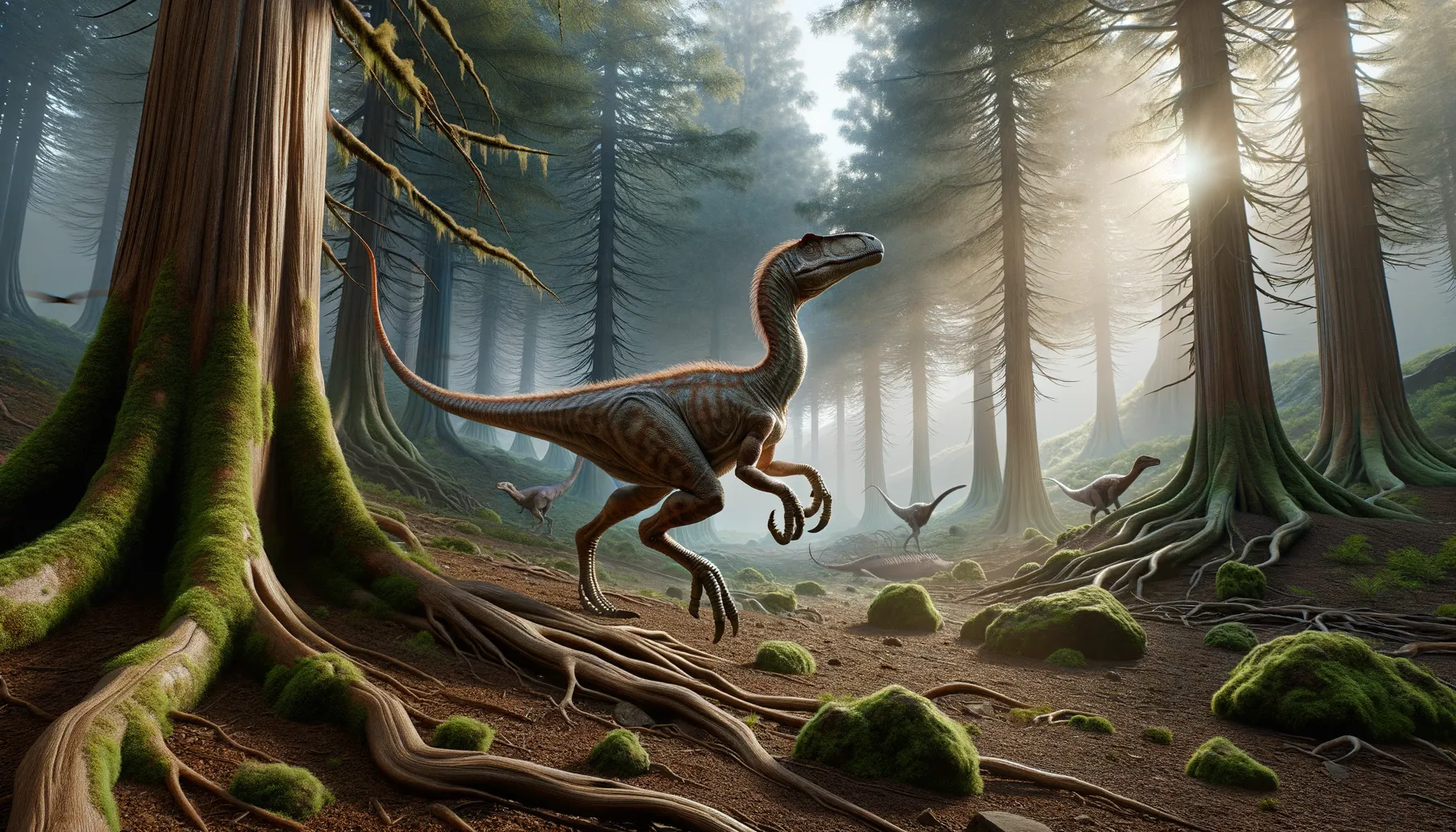
Noasaurus
Agile hunter of the Cretaceous wilds!
Period
Cretaceous
Length
About 2.5 meters long.
Height
Approximately 1 meter tall at the hip.
Weight
Roughly 15-20 kg.
Noasaurus was a small, carnivorous dinosaur that roamed during the Late Cretaceous period. As a member of the theropod group, it had strong, slender legs and a somewhat elongated neck. The discovery of its unusual claw prompted interest in its predatory behavior. Although it might not have been the largest dinosaur, its agility and unique adaptations helped it survive and hunt in its ecosystem.
Diet
Noasaurus was a carnivore, likely feeding on small vertebrates and insects. Its diet would have included anything it could capture with its claws and agile movements.
Hunting
Noasaurus likely relied on stealth and speed to surprise prey. It may have utilized its sharp claws to grapple with prey or defend itself from larger predators.
Environmental challenges
Living in the Late Cretaceous, Noasaurus faced numerous environmental challenges, including climate changes and competition for food resources. The fluctuating temperatures and seasonal variations would have influenced its survival strategies. Additionally, sharing its habitat with larger predators meant constant vigilance was necessary.
Speed
Moderate speed for a small theropod.
Lifespan
Estimates suggest around 15-20 years.
First discovery
Unearthed in Argentina in 1980.
Fun Facts
- Noasaurus was a small dinosaur that lived around 70 million years ago during the Late Cretaceous period.
- It was discovered in Argentina and its name means 'Northwestern Argentina Lizard.'
- Noasaurus was about the size of a turkey, making it one of the smaller theropod dinosaurs.
- Its most notable feature was a large claw on its foot, similar to its more famous relative, the Velociraptor.
- Noasaurus may have been a fast and agile predator, hunting small animals in its environment.
- This dinosaur is part of the Noasauridae family, which includes other small, carnivorous dinosaurs.
- The first fossils of Noasaurus were found in 1980, contributing to our understanding of dinosaur diversity in South America.
Growth and Development
Noasaurus, like other theropods, grew from small hatchlings to adults over a period of several years. It likely underwent rapid growth during its juvenile years to achieve a size that ensured better survival prospects. Understanding its growth patterns helps researchers learn about its life history and survival strategies.
Habitat
Noasaurus inhabited areas that are today part of South America. Its environment consisted of mixed vegetation, enabling it to blend in while hunting. The region likely provided a variety of food sources, aiding its carnivorous lifestyle.
Interaction with other species
Noasaurus would have interacted with numerous species within its ecosystem, both prey and predator. Smaller animals were potential food sources, while larger predators were threats. The interactions within its ecological community helped shape its evolutionary adaptations.
Natural lifespan
Its natural lifespan was estimated to be around 15-20 years.
Reproduction
As a theropod, Noasaurus likely laid eggs, similar to modern birds. The reproductive strategy would have included nest building and potentially some form of parental care. This helped ensure the survival of the next generation despite environmental hazards.
Social behaviour
Noasaurus may have exhibited some degree of social behavior, such as hunting in pairs or small groups. While evidence of pack behavior is limited, collaboration could have aided in securing food more effectively. However, it might also have been a solitary hunter, relying on its speed and agility to survive.
Fossil locations
Fossils of Noasaurus have primarily been found in Argentina, providing important insights into its morphology and lifestyle. These fossil discoveries have helped paleontologists piece together its anatomical features and better understand its place in the Late Cretaceous ecosystem.
